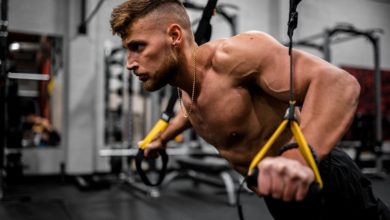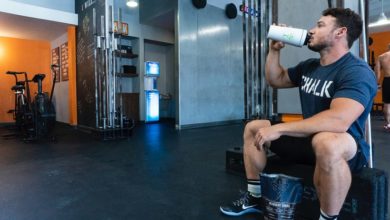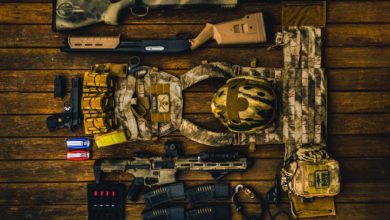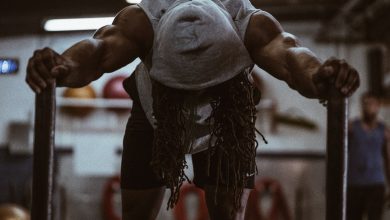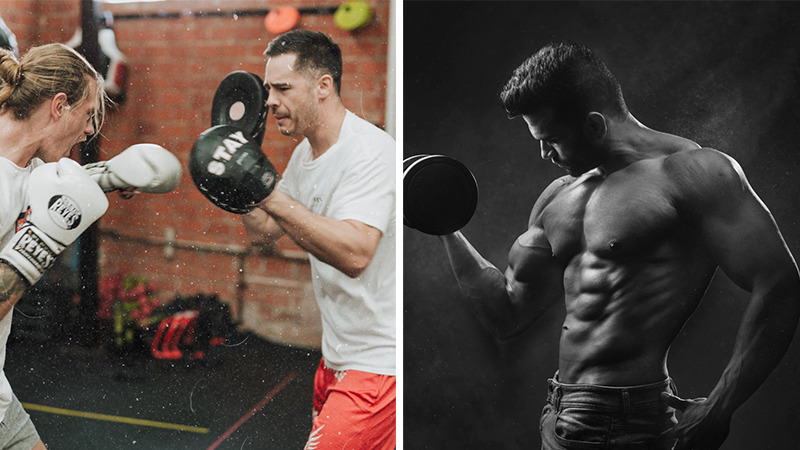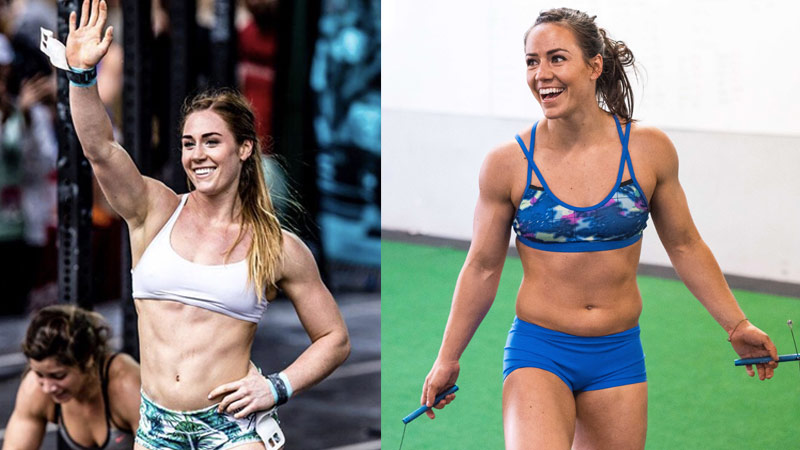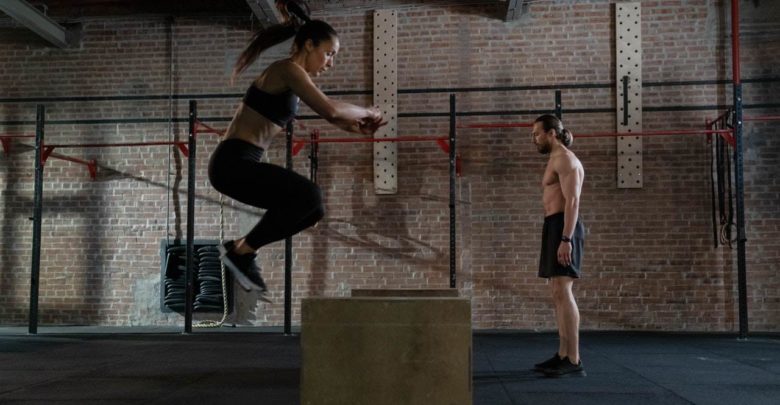
Being a teenager and dealing with excess body fat can be challenging. Many teenagers struggle with their weight and body image, and it’s important to address these concerns in a healthy and effective way. In this comprehensive guide, we will discuss the proper training, cardio, and nutrition strategies specifically tailored for teenagers to help them achieve their fat loss goals. It’s crucial to note that these strategies are safe and beneficial for teenagers, debunking the myth that resistance training is harmful or stunts growth. Let’s dive in!
Differences between Teenagers and Adults in Training
Teenagers are not just smaller versions of adults. Physiologically, teenagers have different needs and considerations when it comes to training. They are still growing and developing, both physically and emotionally. Understanding these differences is essential for designing an effective training program for teenagers.
- Physiological Differences: Before puberty, teenagers’ bodies are still undergoing significant changes. Hormonal levels, such as testosterone and growth hormones, are not as high as in adults. This means that muscle growth is limited, and the focus should be on learning movements and improving fitness rather than building muscle mass.
- Emotional and Social Factors: Teenagers are still developing emotionally and socially, which can impact their motivation and concentration during workouts. It’s important to create a supportive and encouraging environment to help teenagers stay motivated and engaged in their training.
At What Age Should Teenagers Start Lifting Weights?
Age is not the sole determining factor for when teenagers should start working out. In fact, teenagers can engage in physical activity from a very young age. However, when it comes to lifting weights and specifically working towards muscle and strength gains, puberty becomes a significant factor.
- Before Puberty: Before puberty, youth and teens can still engage in physical activity, including weightlifting. However, the primary focus should be on learning proper movement patterns, improving fitness, and developing neuromuscular control. Muscle growth is limited during this stage due to lower hormone levels.
- After Puberty: Once puberty hits and hormones like testosterone are released, teenagers can start focusing on building muscle mass and increasing strength. This is an ideal time to introduce weightlifting and resistance training into their workouts.
Benefits of Working Out for Teenagers
Working out as a teenager offers numerous benefits beyond just physical fitness. Here are some key advantages:
- Improved Overall Health: Regular exercise and physical activity contribute to better cardiovascular health, stronger muscles and joints, and improved bone density. Engaging in physical activity during teenage years sets the foundation for a healthier adulthood.
- Enhanced Body Image and Self-Confidence: Teenage years can be challenging in terms of body image and self-confidence. Regular exercise and strength training can improve body composition, increase self-esteem, and promote a positive body image.
- Reduced Risk of Injuries: Engaging in resistance training helps strengthen muscles, joints, and bones, reducing the risk of injuries during sports or other physical activities. Building a strong foundation during teenage years can prevent injuries in the future.
Best Exercises for Teenagers
When it comes to selecting exercises for teenagers, it’s important to focus on compound movements that engage multiple muscle groups and promote overall strength and stability. Here are some of the best exercises for teenagers:
- Squats: Squats are a fundamental lower-body exercise that targets the quadriceps, hamstrings, and glutes. They also engage the core muscles and promote overall lower body strength.
- Bench Press: The bench press is a classic upper body exercise that targets the chest, shoulders, and triceps. It helps develop upper body strength and muscle mass.
- Deadlifts: Deadlifts are a compound exercise that targets the posterior chain, including the lower back, glutes, and hamstrings. They are excellent for overall strength development and improving posture.
- Pull-Ups: Pull-ups are a challenging exercise that targets the back, biceps, and shoulders. They help develop upper body strength and promote good posture.
- Lunges: Lunges are a lower body exercise that targets the quadriceps, hamstrings, and glutes. They also engage the core muscles and improve balance and stability.
These exercises should be performed with proper form and technique to maximize their effectiveness and reduce the risk of injury. It’s recommended to seek guidance from a qualified trainer or coach to ensure proper execution.
Full Workout Plan For Teenagers To Lose Fat
Now that we’ve established the objectives of the workout routine, let’s delve into the details of the 16-week program. The program is divided into two parts: bodyweight training for the first four weeks and resistance training for the remaining twelve weeks. Each part will focus on specific muscle groups and gradually increase in intensity to ensure progressive overload and continuous growth.
Weeks 1-4: Bodyweight Training
The initial four weeks of the program serve as a primer for the subsequent resistance training phase. This period allows teenagers to ease into their fitness journey, learn proper form, and develop mind-muscle connection. The bodyweight training routine should be performed three times a week, with the option to increase frequency if desired.
Day 1: Full-Body Bodyweight Workout
- Push-ups: 3 sets of 15 reps
- Step-up with Knee Raise: 3 sets of 15 reps (each side)
- Squats: 3 sets of 15 reps
- Burpees: 3 sets of 15 reps
- Dips: 3 sets of 10 reps
- Single-Leg Glute Bridge: 3 sets of 15 reps
- Crunches: 3 sets to failure
Day 2: Upper Body Bodyweight Workout
- Pull-ups: 3 sets of 15 reps
- Mountain Climbers: 3 sets of 15 reps (each side)
- Squats: 3 sets of 15 reps
- Pike Push-ups: 3 sets of 15 reps
- Glute Kickbacks: 3 sets of 15 reps
- Reverse Crunches: 3 sets of 15 reps
- Plank: 3 sets of 30 seconds
Day 3: Lower Body Bodyweight Workout
- Wide-grip Pull-ups: 3 sets of 15 reps
- Wide Push-ups: 3 sets of 15 reps
- Jump Squats: 3 sets of 15 reps
- Crab Walk: 3 sets of 20 steps (10 forward, 10 backward)
- Oblique Crunches: 3 sets of 15 reps
- Frozen V-sit: 3 sets of 15 reps
- Lunges: 3 sets of 15 reps
Weeks 5-16: Resistance Training
After establishing a solid foundation with bodyweight exercises, it’s time to progress to resistance training using dumbbells. This phase of the program will focus on a three-day split: push, pull, and legs. The three-day split allows for optimal muscle recovery and growth while targeting different muscle groups in each session.
Day 1: Push Day
The first training day of the week will target the chest, shoulders, and triceps. Push exercises will help develop upper body strength and muscle mass.
- Barbell Bench Press: 3 sets of 8-12 reps, 90 seconds rest between sets
- Dumbbell Flyes: 3 sets of 8-12 reps, 90 seconds rest between sets
- Seated Dumbbell Side Lateral Raise: 3 sets of 8-12 reps, 90 seconds rest between sets
- Dumbbell Tricep Kickbacks: 3 sets of 8-12 reps, 90 seconds rest between sets
- Push-ups: 3 sets of 20 reps, 90 seconds rest between sets
- Crunches: 3 sets of 20 reps, 90 seconds rest between sets
Day 2: Pull Day
The second training day of the week will focus on the back, biceps, and rear delts. Pull exercises will help develop a strong and defined upper back.
- Pull-ups: 3 sets of 8-12 reps, 90 seconds rest between sets
- Bent-over Dumbbell Rows: 3 sets of 8-12 reps, 90 seconds rest between sets
- Dumbbell Deadlifts: 3 sets of 8-12 reps, 90 seconds rest between sets
- Bent-over Rear Delt Flyes: 3 sets of 8-12 reps, 90 seconds rest between sets
- Dumbbell Bicep Curls: 3 sets of 8-12 reps, 90 seconds rest between sets
- Floor Dumbbell Skull Crushers: 3 sets of 8-12 reps, 90 seconds rest between sets
- Reverse Crunches: 3 sets of 8-12 reps, 90 seconds rest between sets
Day 3: Leg Day
The third training day of the week will target the lower body, focusing on the quadriceps, hamstrings, glutes, and calves. Leg exercises are essential for overall lower body strength and development.
- Goblet Squats: 3 sets of 8-12 reps, 90 seconds rest between sets
- Dumbbell Lunges: 3 sets of 8-12 reps, 90 seconds rest between sets
- Dumbbell Romanian Deadlifts: 3 sets of 8-12 reps, 90 seconds rest between sets
- Goblet Sumo Squats: 3 sets of 8-12 reps, 90 seconds rest between sets
- Standing One-Leg Calf Raises: 3 sets of 20 reps (each leg), 90 seconds rest between sets
- Russian Twists: 3 sets of 20 reps (each side), 90 seconds rest between sets
Cardiovascular Training for Teenagers
Cardiovascular training is an essential component of any fitness routine, including for teenagers. Here are some cardio exercises that can be included in a teenager’s workout plan:
- Running: Running is a simple and effective cardiovascular exercise that can be done outdoors or on a treadmill. Start with shorter distances and gradually increase the duration and intensity.
- Cycling: Cycling can be done on a stationary bike or outdoors. It’s a low-impact exercise that provides a great cardiovascular workout.
- Jumping Rope: Jumping rope is a fun and challenging cardio exercise that can be done anywhere with minimal equipment. It improves coordination and cardiovascular endurance.
- HIIT (High-Intensity Interval Training): HIIT involves alternating between short bursts of high-intensity exercise and brief recovery periods. It’s an efficient way to burn calories and improve cardiovascular fitness.
- Sports and Activities: Engaging in team sports or other physical activities like swimming, dancing, or martial arts can also provide excellent cardiovascular workouts while adding an element of fun and social interaction.
It’s recommended to perform cardiovascular exercises 2-3 times per week, starting with shorter durations and gradually increasing the intensity and duration as fitness levels improve.
Nutrition for Teenagers
Proper nutrition is crucial for supporting overall health and achieving fat loss goals. Here are some key principles to keep in mind when it comes to nutrition for teenagers:
- Caloric Intake: To lose fat, teenagers should aim for a slight caloric deficit, meaning they consume fewer calories than they burn. It’s important not to restrict calories too severely, as this can negatively impact growth and development. A deficit of around 500 calories per day is a safe starting point.
- Macronutrients: Teenagers should focus on consuming a balanced diet that includes all three macronutrients: carbohydrates, proteins, and fats. Carbohydrates provide energy, while proteins support muscle growth and repair. Healthy fats are essential for hormone production and overall health.
- Meal Frequency: Teenagers should aim to eat regular meals throughout the day, including breakfast, lunch, dinner, and snacks. Eating smaller, balanced meals more frequently can help maintain energy levels and prevent overeating.
- Hydration: Staying hydrated is important for overall health and performance. Teenagers should aim to drink plenty of water throughout the day and limit sugary drinks.
- Whole Foods: Focus on consuming whole, nutrient-dense foods such as lean proteins, fruits, vegetables, whole grains, and healthy fats. Minimize processed foods, sugary snacks, and beverages.
It’s important for teenagers to consult with a healthcare professional or registered dietitian to ensure they are meeting their nutritional needs and to address any specific concerns or dietary restrictions.
Supplements for Teenagers
While a well-balanced diet should provide all the necessary nutrients, some teenagers may benefit from certain supplements. However, it’s important to note that supplements should not replace a healthy diet, but rather complement it. Here are some supplements that may be beneficial for teenagers:
- Protein Powder: Protein powders can be a convenient way to increase protein intake, especially for teenagers who may struggle to consume enough through food alone. Opt for high-quality protein powders without added sugars or unnecessary additives.
- Multivitamin: A multivitamin can help fill any nutritional gaps and ensure teenagers are getting essential vitamins and minerals. Look for a multivitamin specifically formulated for teenagers.
- Fish Oil: Fish oil supplements are rich in omega-3 fatty acids, which are important for brain health, heart health, and overall well-being. They can be especially beneficial for teenagers who don’t consume fatty fish regularly.
- Creatine: Creatine has been shown to enhance strength and muscle gains in individuals engaging in resistance training. However, teenagers should consult with a healthcare professional before considering creatine supplementation.
It’s important to emphasize that supplements are not necessary for everyone, and a well-balanced diet should always be the primary focus.
Key Aspects of Cutting for Teenage Boys
To achieve successful cutting results, it’s essential to understand and implement key strategies. Here are the fundamental aspects of cutting for teenage boys:
1. Set Your Goal
Before starting your cutting journey, clearly define your goals. Whether you aim to reach a specific body fat percentage, improve your athletic performance, or simply enhance your physique, having a clear goal will help you stay motivated and focused throughout the process.
2. Establish a Timeline
Setting a specific timeline for your cut is crucial for monitoring your progress and making adjustments as needed. A 12-week cutting plan is a popular choice as it allows for a gradual and sustainable fat loss while preserving muscle mass. However, you can adjust the plan to fit your individual needs, whether you have more or less time available. Remember that slow and steady progress is key to maintaining muscle mass and overall health.
3. Plan Your Calorie Intake
Calorie intake plays a significant role in cutting. To create a calorie deficit for fat loss, you need to consume fewer calories than your body requires. The best approach is to gradually reduce your calorie intake over time, rather than making drastic cuts right away. This tapering method allows your body to adapt to the lower calorie intake and minimizes the risk of feeling sluggish or compromising your workouts. Start at your maintenance level in the first week and gradually decrease by 100-200 calories per week until you reach a deficit of 300-500 calories.
4. Focus on Macros
Macronutrients, including protein, carbohydrates, and fats, are essential for supporting muscle preservation and overall health during a cutting phase. While the exact macronutrient ratios may vary depending on individual preferences and goals, a general guideline is to prioritize protein intake, keep carbohydrates at moderate levels, and include healthy fats in your diet. Aim to consume around 1 gram of protein per pound of body weight to provide adequate amino acids for muscle maintenance and repair.
5. Structure Your Meals
Dividing your daily calorie and macronutrient intake into multiple smaller meals can help regulate hunger and maintain stable energy levels throughout the day. Aim for 4-6 meals per day, including breakfast, lunch, dinner, and snacks. Distribute your protein, carbohydrates, and fats evenly across these meals to support muscle preservation and optimize nutrient absorption. Consider incorporating healthy, unprocessed foods such as lean meats, fruits, vegetables, whole grains, and healthy fats into your meals to ensure a well-rounded and nutritious diet.
6. Incorporate Cardiovascular Exercise
Cardiovascular exercise is a valuable component of cutting as it supports calorie burn and enhances overall fitness. There are two main types of cardio you can incorporate into your cutting routine: low-intensity long-duration cardio and high-intensity interval training (HIIT). Low-intensity cardio, such as brisk walking or cycling, can be performed for 30-60 minutes at a moderate pace, while HIIT involves short bursts of intense exercise followed by active recovery periods. Choose the type of cardio that suits your preferences and goals, and aim for 3 cardio sessions per week.
7. Prioritize Weightlifting
Weightlifting is crucial for maintaining muscle mass and strength during a cutting phase. Focus on compound exercises that target multiple muscle groups, such as squats, deadlifts, bench presses, and rows. These exercises provide the most bang for your buck in terms of muscle activation and calorie burn. Keep your rest periods between sets to a minimum, ranging from 30-45 seconds, to maintain an elevated heart rate and maximize calorie expenditure. Aim for 3 full-body weightlifting sessions per week, ensuring that you challenge yourself with appropriate weights and rep ranges.
8. Stay Hydrated and Rested
Proper hydration and rest are often overlooked but essential aspects of any fitness regimen. During cutting, it’s crucial to stay hydrated to support overall health and optimize exercise performance. Aim to drink at least 8 glasses of water per day and increase your intake during periods of intense exercise or hot weather. Additionally, prioritize quality sleep to aid in muscle recovery and hormone regulation. Aim for 7-8 hours of uninterrupted sleep each night to support optimal physical and mental well-being.
9. Monitor Your Progress
Throughout your cutting journey, it’s important to track your progress to ensure that you’re on the right path toward achieving your goals. Keep a record of your body weight, body measurements, and strength levels to assess changes over time. Additionally, pay attention to how you feel both physically and mentally. Adjust your nutrition and exercise plan as needed based on your progress and how your body responds.
10. Seek Professional Guidance
If you’re new to cutting or have specific goals in mind, it’s wise to seek guidance from a qualified fitness professional or nutritionist. They can provide personalized advice, tailor your workout and diet plan to your specific needs, and ensure that you’re on the right track. A professional can also help you navigate any challenges or plateaus you may encounter during your cutting phase, ensuring that you continue to progress toward your goals.
Conclusion
Losing fat and improving overall fitness as a teenager is not only possible but also beneficial for long-term health and well-being. By following a properly designed training program, incorporating cardiovascular exercise, and adopting a balanced nutritional approach, teenagers can achieve their fat loss goals while promoting healthy growth and development. Remember to prioritize safety, seek guidance from qualified professionals, and stay consistent in your efforts. Good luck on your fitness journey!
